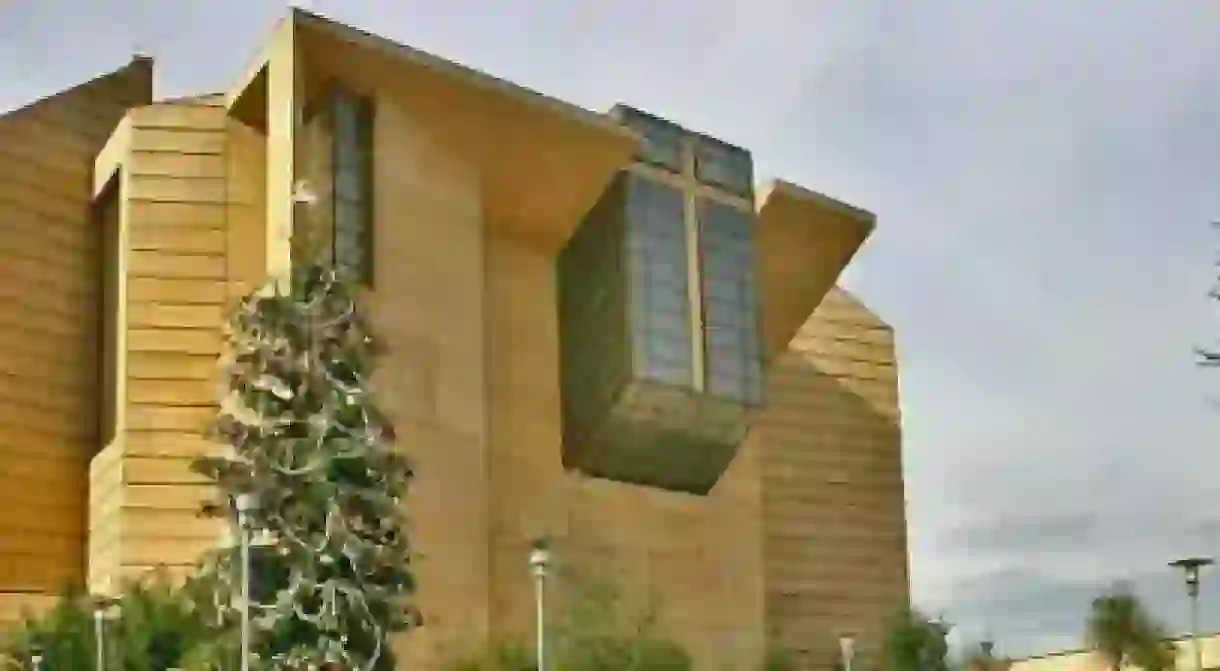The Monumental Architecture of Agustin Hernandez Navarro

Agustin Hernandez Navarro’s buildings connect the interdisciplinary realms of archaeology and philosophy with architecture, linking spaces with humans, and form with function. In a seemingly never-ending combination of materials, his work leaves a monumental mark on Mexico’s architectural scene. Here are five things you didn’t know about this talented architect.

Architecture was not his calling
The world was nearly denied the opportunity of contemplating Agustin Hernandez Navarro’s architecture. It was both by fortuity and his environment that Navarro wound up studying architecture at UNAM against his desires of becoming an electrical or mechanic engineer. His mother forced him to follow architecture, like his older brother, arguing that this discipline was the way to independence and freedom. Nevertheless, he struggled through the first years of college, beating his initial lack of desire, he then struggled against his professors’ conservatism. Nevertheless both Diego Rivera and Doctor Ati praised his thesis, a cultural center of modern art with nationalist motifs. It was never built due to, Navarro believes, Mexico’s conservative mentality.
Mexican history and archaeology were his inspirations
Navarro Hernandez draws inspiration from history, exploring pre-Hispanic Mexican cultures. Reediting indigenous notions of space, he designed the Heroico Colegio Militar (1976) to resemble the Zapotec ceremonial centers of Monte Alban and Teotihuacan, with their open spaces and pyramids to venerate the sun and moon-deities. Hernandez Navarro made a monument to the Mexican state. He uses pre-Colombian motifs and glyphs recurrently in the Meditation Centre of Cuernavaca (1984), with one of the buildings reminiscing of an open-mouthed Quetzalcoatl, the Aztec feathered serpent-deity. Nevertheless, he denies that his architecture is nationalist.

His architecture is also a philosophical exploration of space
This historical conception of architecture is connected to a philosophical exploration of space. Generally architects think of space in a manner inextricably linked to the soil, built on it and bounded by it; Hernandez Navarro’s buildings are boundlessly contained by air. Two of his most prominent works, La casa en el aire (The house in the air, 1991) and his own workshop exemplify this. For the former, he adapted to the steep terrain on which the building was to take place. He hid the garages and services on the slope, and built the main hall as a square tilted 45 degrees, suspended in the air. He describes the place as having: “its garden in the air and the landscape is the mountains beyond, in the horizon.”
His own studio built in 1975 is equally challenging to the status quo—and gravity—from its aesthetics to its engineering. Standing like a tree, he seeks the unity of structure, form and function. He says that people in spherical spaces feel like a sphere, alluding to the symbiotic relationship that exists between humans and spaces. The entrance to the studio is a bridge floating between the trees. But inside, the structure is lighter and the furniture is specifically designed to not lose space with the diagonal walls, thus defying the idea that diagonal walls are a waste of space. Both suspended spaces are also meant to cause a feeling of vertigo, making the feeling an essential part of the construction.
He uses a vast array of materials for construction
Hernandez Navarro has no preferred material for his buildings, changing constantly between clay, steel, concrete and aluminum. This makes it impossible to encapsulate him in a single architectural movement. His studio seems to belong to the brutalist movement, with giant concrete and marble plates, which are interlocked in the form of the pre-Hispanic Tau, being held together by the tension, compression, and interlocking of the elements. Alternatively he plays with sensuous and organic curves in the clay house he designed for his sister Amalia, breaking with the sharp angles present in his own studio, and using ingenuous methods to illuminate the inner gardens. Finally, The House in the Air supports its concrete slabs with steel cantilevers to create a figure that has been distinctly interpreted as a futuristic spaceship or a flying snake. Despite the original intentions of the architect, his works have permeated into the popular culture and acquired a life of its own.

Not only an architect, but also a poet building for the future
A lesser-known facet of the Mexican architect is his poetic work, Gravity, Geometry and Symbolism published in 1989 by UNAMand his study of space with “the fear of vacuums,” and the interaction between “positive light, and negative shadows.” Thus, he gives an insight into the creative process of the architect’s mind.
Despite all, he is an architect for the future and not from the past. The symbolism he uses, or the variety of materials, though belonging to Mexican tradition, are also relevant to the present and a tacit invitation to the future. In his own words: “today’s architecture has to have something from yesterday, but much more of tomorrow.”













